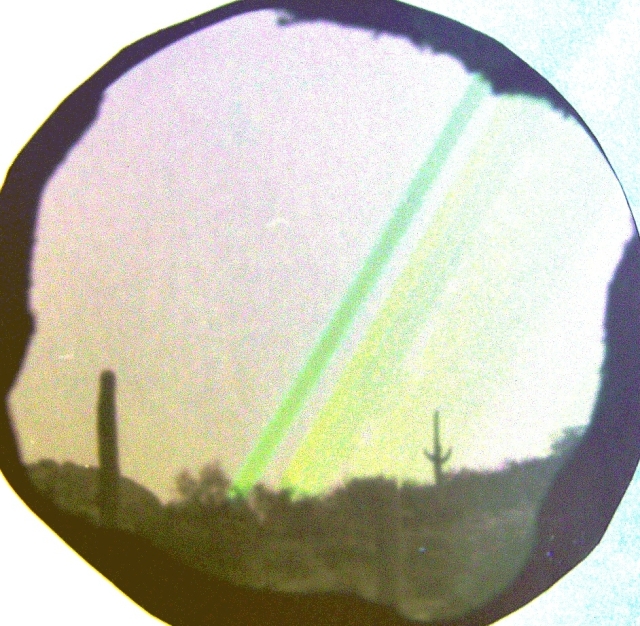The two photos (below) show a pinhole camera, which is made from a 24 ounce beer can, near the peak of the roof at the front of my house and a similar camera by the roof eves in the back of my house.
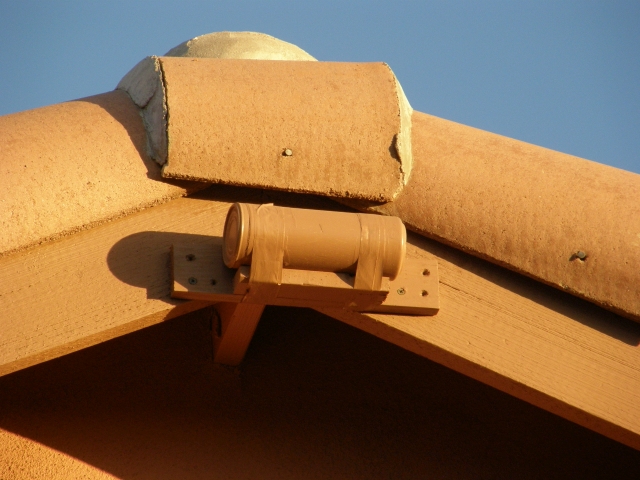

The photo (below) shows a pinhole camera mounted vertically on the fence and another one mounted horizontally on the tree.
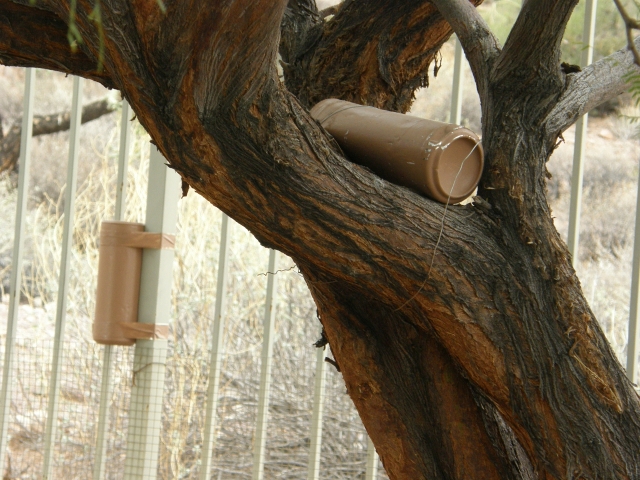
The two exposures (below) show the sun paths over 182 days as seen from the back of my house, with the hill behind my house in the foreground, and then as seen from the front of my house. The front view looks down a street that curves slightly. The back view is taken with a vertical camera and the front view is from a horizontal camera. Notice the solar paths project differently in cameras that have a different orientation.

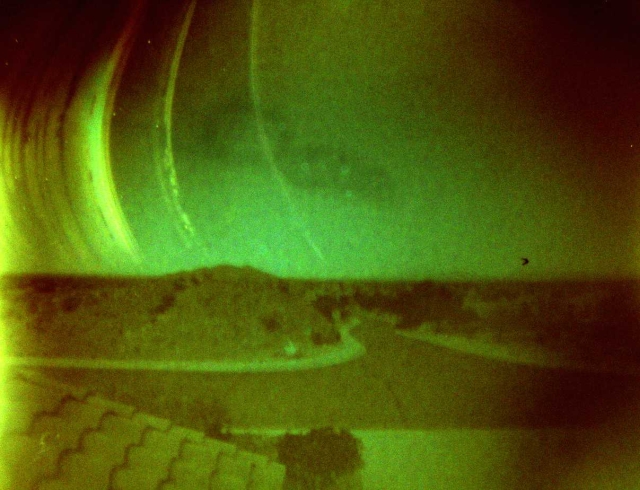
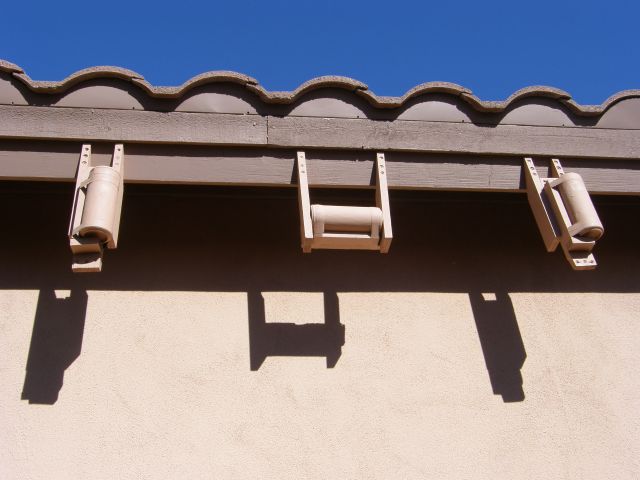

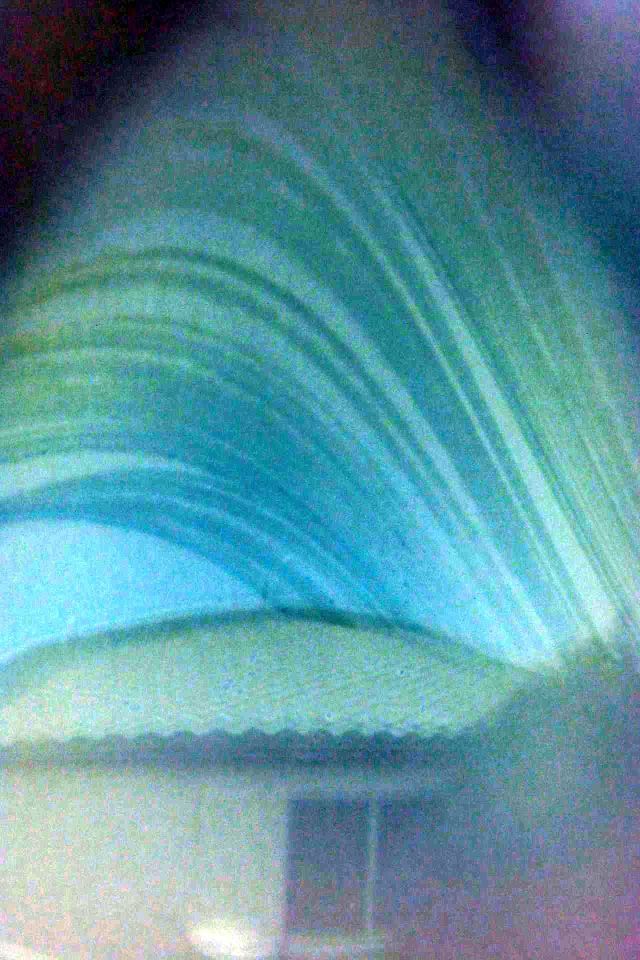

The pinhole camera image below shows 182 solar tracks with many reflected by the water in our swimming pool, as well as the "normal" view of the same scene.
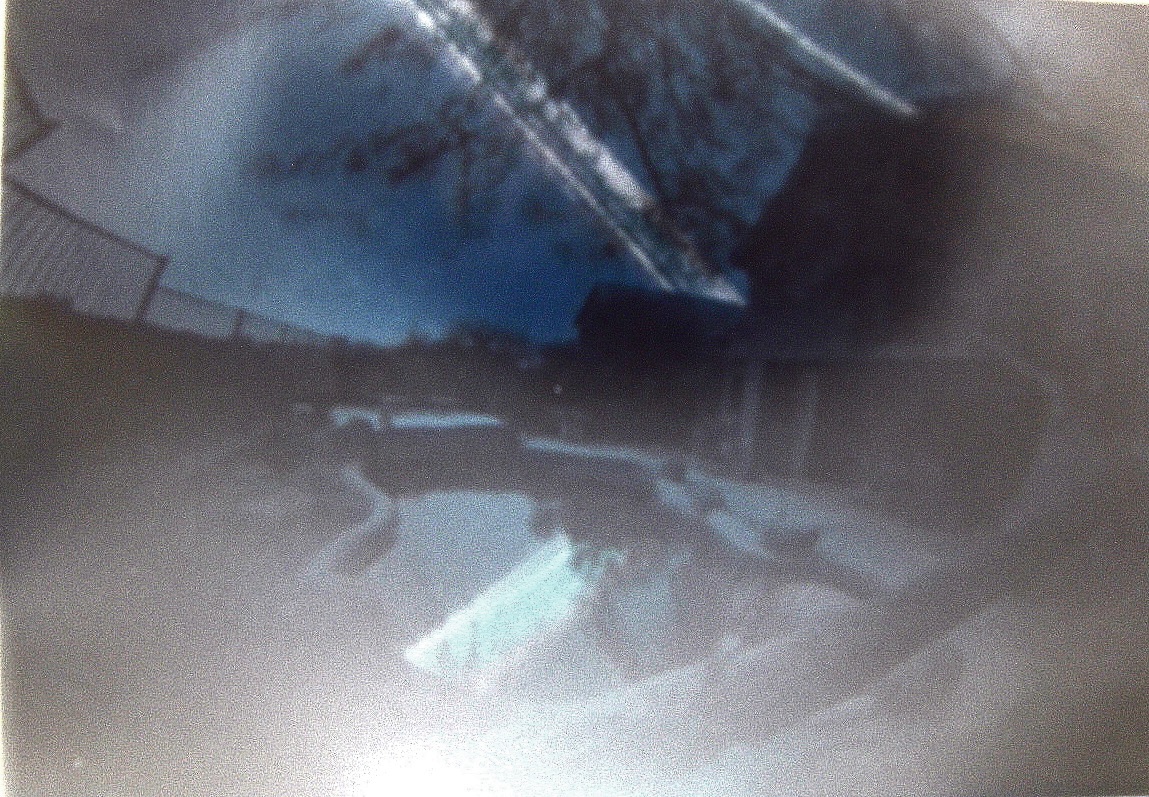
This view (below) of the eastern horizon shows the solar paths reflected by the surface of the water in the swimming pool, as compared to the normal view of the eastern horizon with the swimming pool in the foreground.
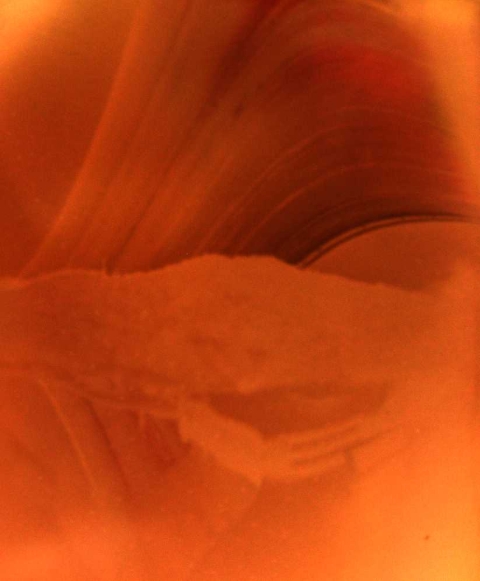
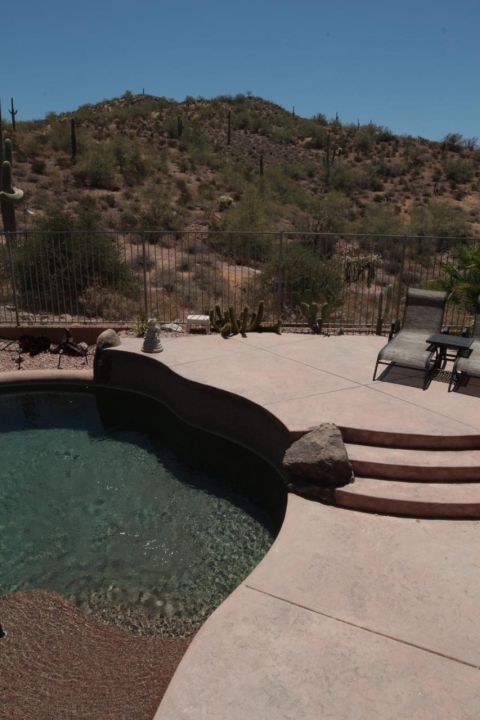
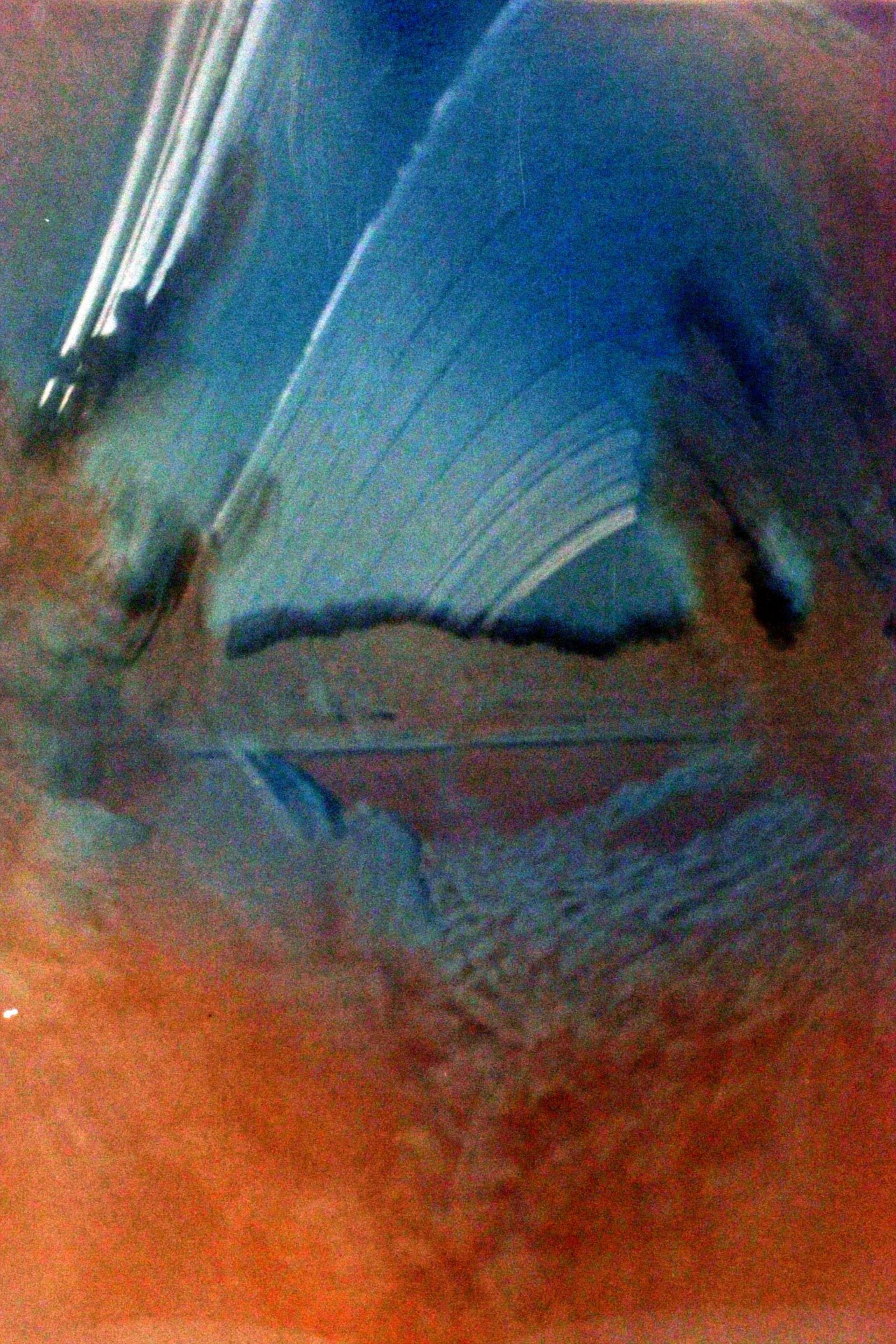
Below is a pinhole image of a much more restricted view with 182 solar paths, as well as the pinhole camera that took the picture. Notice that the larger distance between the front pinhole end and the rear photo-paper end creates the greater enlargement at a more restricted field. Also notice that the photo paper had to be trimmed to a circle to accommodate the shape of the plastic pipe that I made into this pinhole camera. This image, unlike all other images on this web page, is formed on a plane (non-curved) piece of photographic paper, so the image is not distorted by the curve of the photographic paper.
